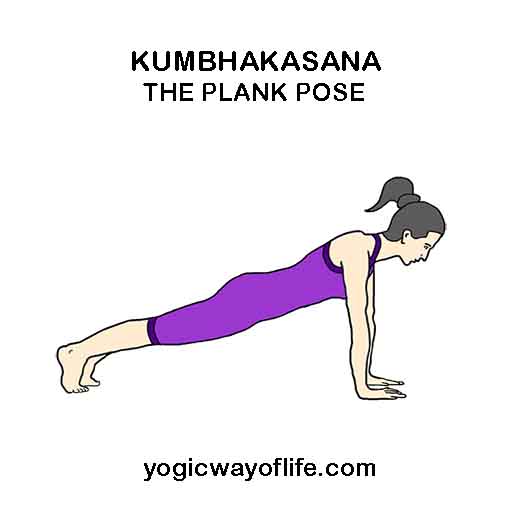Kumbhakasana or the Plank Pose develops strength of core muscles of the shoulders, arms, trunk and legs. In Sanskrit, Kumbhaka means the holding of breath and Asana means a pose. In the final pose, the breath (or Kumbhaka) is held to maintain the posture.
How to do Kumbhakasana (The Plank Pose)?
- Start with the kneeling position with the hands on the thighs.
- Bend forward and place your hands on the floor in front of you. Raise the buttocks up to assume the cat position with the knees still on the floor.
- Slide both the feet backwards and raise the knees above the ground so that you are balancing the weight of the body with your two palms and the toes of the feet.
- Inhale and hold the breath when you hold the position. You may also breathe slowly and lightly in the final position, if holding of breath is difficult. Hold the position for as long as you are comfortable. The more you stay in this postion, the more you will develop strength and stamina.
- The head, head, trunk, back and legs should all be in one straight line in the final pose. Keep the hands and legs straight. Do not bend the elbows or the knees.
- To release the pose, bend the knees and bring the knees to the floor. Come back to the kneeling position.
Benefits of Kumbhakasana (The Plank Pose)
- Kumbhakasana strengthens the shoulders and arms.
- It strengthens the muscles along the spine.
- It tightens the abdominal muscles.
- It helps to build stamina and endurance.
Contraindications for Kumbhakasana
Those suffering from wrist or shoulder injury should not perform Kumbhakasana or the Plank pose. Also those having carpal tunnel syndrome should avoid this asana. Such practitioners can do a variation of plank pose where the weight of the body is supported by the entire forearms rather than the palms.

